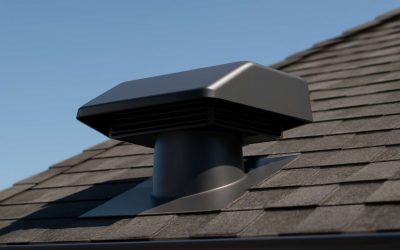
When it comes to attic ventilation, roof vents are a key part of an effective system. They allow hot air to escape from the attic so that cooler, more efficient air can enter and help your home stay comfortable. Having enough ventilation in the attic helps prevent moisture problems, mold, and other damage to your home. In addition, adequate ventilation can help extend the life of your roof.
There are many types of roof vents available for homeowners to install in their homes. The best choice will depend on the layout of your attic, the type of roof you have, and your climate. Some of the most popular types of roof vents include ridge vents, turbine vents, and gable end vents.
Ridge vents are cut into the ridge of your roof and run the length of the ridge. They can be a good option if your attic doesn’t have a lot of other venting options, since ridge vents are very efficient and not as visible as other types of roof vents. However, if your climate is windy or you have a lot of snow and rain, ridge vents can become blocked with debris and may not work as well.
Turbine vents (also known as whirlybird roof vents) are the large, round vents you may see on barns and old farmhouses. These vents spin in the wind to help pull air out of your attic, but they can be a little less efficient than other vents and can be noisy. They are also prone to breaking and can allow rain, snow, and bugs into the house if the holes aren’t properly sealed.
Gable end vents are installed on the gable end of your attic near where the 2 slopes meet. They can be both intake and exhaust vents, depending on which way the wind is blowing. They are a good option for situations where you cannot vent your attic through the soffit or if you want a more decorative vent.
Fascia vents are a good choice for attic ventilation in homes with flat or low-sloped roofs. They are a simple, cost-effective way to improve attic ventilation by pulling air from the bottom of your attic and directing it through soffit vents to exhaust the attic space.
You can purchase a venting system with built-in fans that will automatically turn on when humidity levels in your attic reach an unsafe level. These systems are usually more expensive than other types of roof vents, but they can save you money in the long run by preventing moisture problems and mold. Before you decide on a system, make sure to read the manufacturer’s warranty carefully to be sure that it covers everything you need it to. Also, make sure to calculate the amount of ventilation you need based on your square footage of attic space and ensure that you’re getting the proper amount of intake and exhaust. Finally, remember that bathrooms and kitchens need their own ducting and vent hoods and should not be vented through the attic.



0 Comments